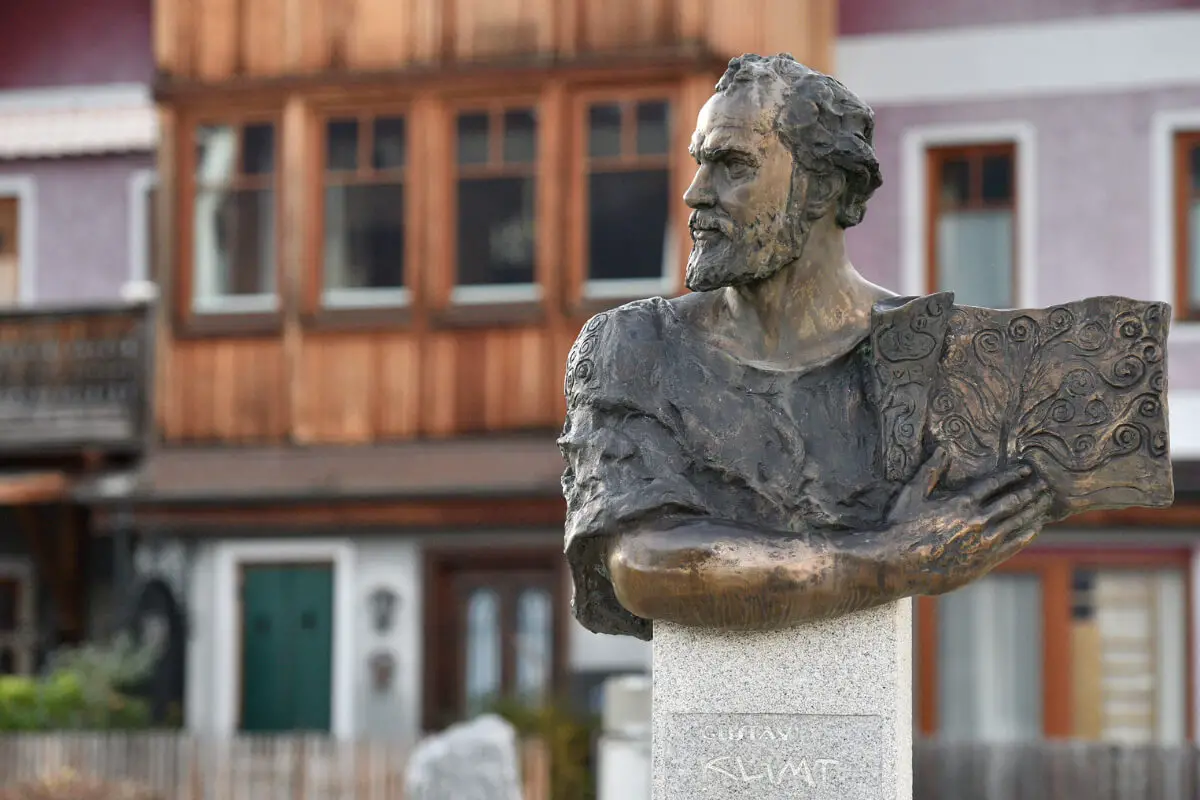Embodying a seamless fusion of symbolism and eroticism in immaculately crafted masterpieces, Gustav Klimt indubitably stands as a pillar in the panorama of art history. Born into a humble Viennese household, Klimt journeyed through a path paved by relentless passion and consummate skill, ascending eventually to become one of the most acclaimed artists of his era.
A purveyor of symbolism, every stroke in Klimt’s creations narrates an unspoken story while reflecting his philosophical insights. Bearing the hallmark of artistic courage, Klimt navigated the course of his career with a bold spontaneity, leading the fray in the rebellious spirit of the Vienna Secession. His art, symbolizing a beautiful defiance against constrictive traditions, has underscored the passage of time, being the inspiration that spurred numerous contemporary artists and movements into action.
Table of Contents
- Gustav Klimt’s Background and Journey in Art
- Analysis of Symbolism in Klimt’s Art
- Klimt and the Vienna Secession
- Klimt’s Iconic Works
- Klimt’s Legacy in Modern Art
- Related Questions
Gustav Klimt’s Background and Journey in Art
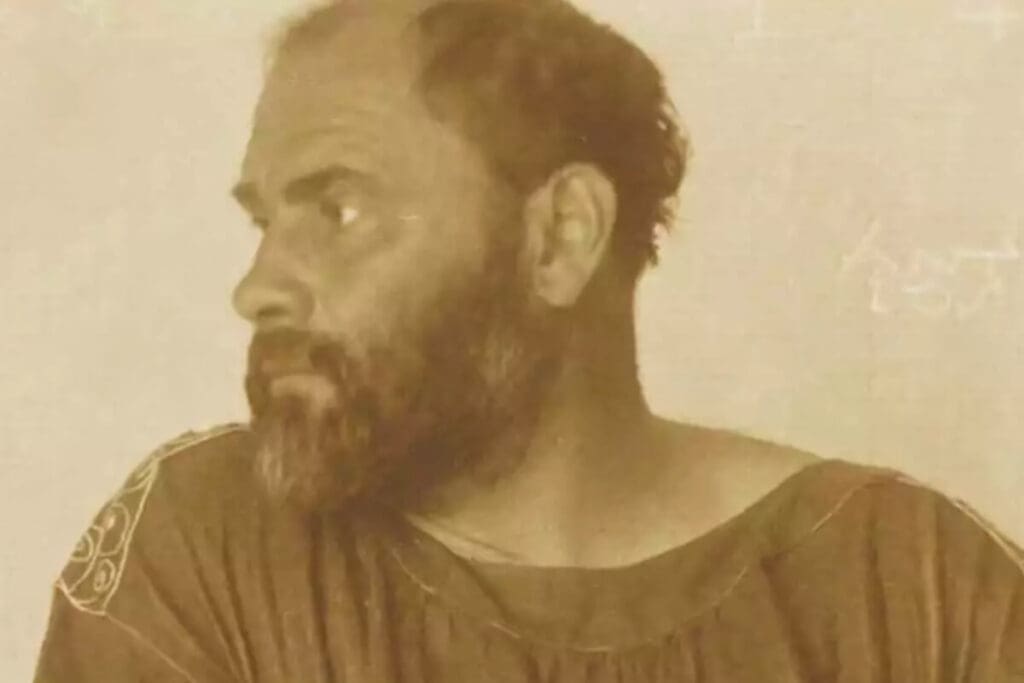
Undeniably, the magnetic allure of Gustav Klimt’s artwork holds an irresistible charm for art lovers across the globe. His paintings, characterized by an intricate and decorative style, ethereal beauty, and an exploration of erotic subjects, reverberate with an undeniable influence of his upbringing and early career.
Born in 1862 in Baumgarten, near Vienna, Gustav Klimt was the son of a gold engraver, Ernst Klimt. This fact is pivotal in understanding the genesis of Klimt’s unique artistic style. Growing up, Klimt was exposed to the fine artistry and precision involved in his father’s work. This early influence is palpable in his iconic “Golden Phase,” where the artist integrated gold leaf into his oil paintings, thus mirroring echoes of his father’s craft.
Another significant aspect of Klimt’s upbringing was his humble socio-economic background. Residing in the poverty-stricken neighborhood of Vienna, he was exposed to different facets of the human condition, which were later depicted in the realistic and often raw portrayals of individuals in his work.
Upon his admission to Vienna’s School of Applied Arts at the age of 14, Klimt honed his artistic skills and was introduced to classical and conventional training. He explored the aesthetics of historical and allegorical subjects, which paved the way for his signature portraiture, which blended reality with symbolism.
Another influential factor in Klimt’s early career was his association with the Vienna Secession, a group that sought to break free from the traditional confines of academic art. As a co-founder, Klimt celebrated modernism and was pivotal in introducing contemporary European art to Vienna. The Secession phase hugely influenced his style, and he stepped away from traditional artistic norms, which led to the birth of his distinct and revolutionary style.
The illustrious works Gustav Klimt left as his legacy continually inspire admiration and wonder. The artist’s upbringing and early career were rich with experiences and influences that significantly shaped his innovative style.
Through his signature shimmering mosaics of ornamental patterns, ethereal figures, and exploration of societal and personal themes, one can trace back the roots to the early influential elements of his life. Klimt, without question, will continue to be revered as a pivotal figure in the history of European art, embodying the spirit of rebellion within the confines of conventions and a ceaseless exploration of the human condition through his art.
Analysis of Symbolism in Klimt’s Art
Throughout his illustrious career, Gustav Klimt was a symbolist par excellence, working subconsciously to reveal the innermost machinations of the human psyche. Klimt’s astute usage of symbolism was a conduit through which he articulated his most profound thoughts and ideas, creating a visual vocabulary that communicated more than the discerning eye could merely appreciate on a surface-level examination.
Central to understanding Klimt’s symbology is a myriad of esoteric philosophies, religion, and mysticism, with a special nod to the metaphysical aspects of existence. He was fond of Egyptian, Greek, and Byzantine civilizations; his artistic tapestry was woven with the threads of these ancient influences, intertwined intricately to reflect his ideas on life, death, and, perhaps more importantly, love.
Klimt’s use of alternating concentric circles, spirals, squares, and the tree of life motifs are recognizable facets of his works—symbolism borrowed from various cultural, religious, and philosophical ideologies. Elements of these geometric shapes are not merely ornamental but convey the cyclic nature of life, spiritual evolution, connection, wholeness, and infinity—ideas that Klimt was fervently absorbed in.
Klimt’s women, often painted sensuously, were more than mere depictions of the female form. They were symbols of the universal mysteries of life, love, creation, procreation, and metamorphosis. His series of erotic drawings incited controversy, but in essence, they mapped his thoughts on the intertwining dimensions of sensuality, love, and spirituality, thus revealing his unwavering dedication to unmasking the emotional complexity of the human psyche.
His use of gold, a carry-over from the imprint of his father’s gold engraving profession, found a symbolic semantic in Klimt’s art. Gold, representative of holiness and divinity, was Klimt’s favorite medium to showcase the sublime elements of existence, accentuating the sanctity of life while depicting his characters’ spiritual radiance and inner luminosity.
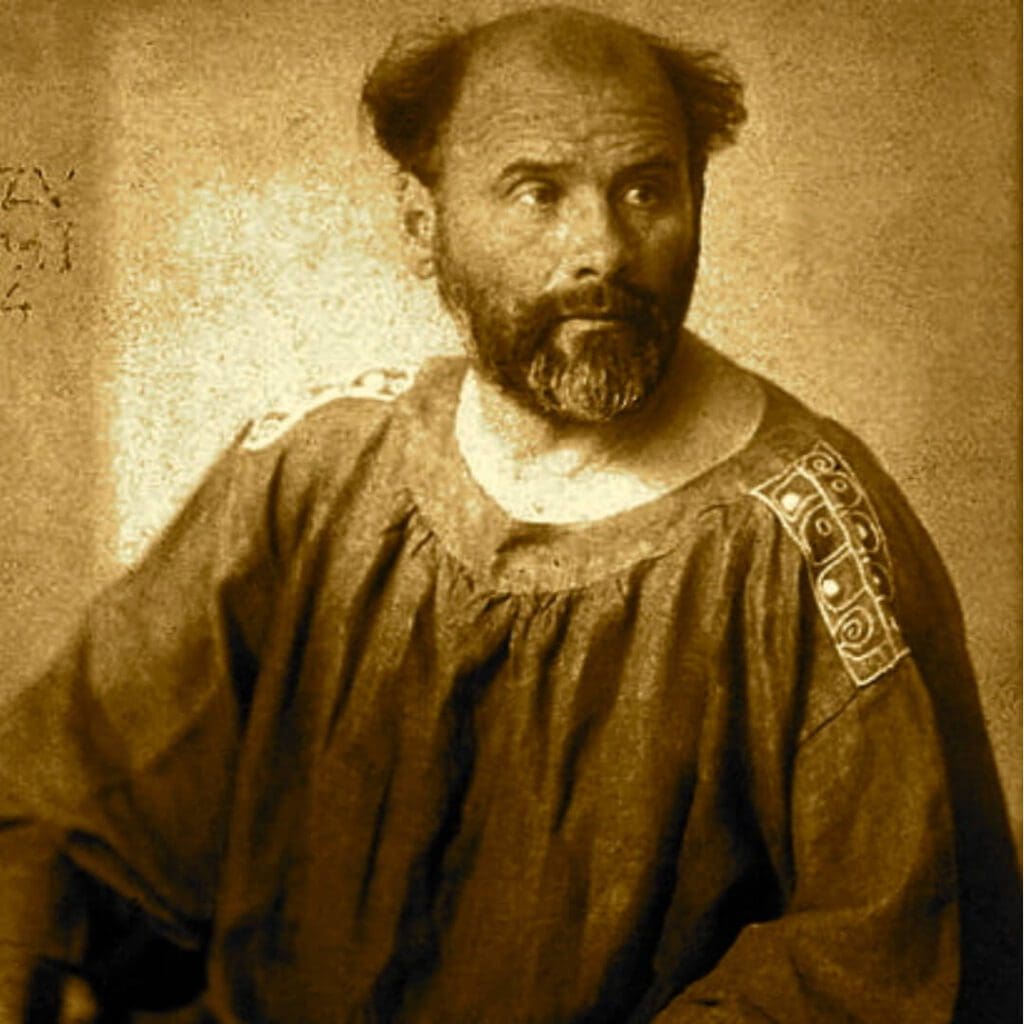
The robes adorned by his figures, intricately decorated with geometric and naturalistic patterns, whispered tales of transformation and the human journey through life. The layers hidden within these decorative motifs immersed the viewer in the symbolic storytelling of Klimt’s perception of human existence.
In Klimt’s art, symbolism was not a mere compositional element but the essence that breathed life into the canvas. His symbolism was a mirror that reflected not just the visible but dug deeper, unveiling Klimt’s philosophical dialogs with life, love, and the linear inevitability of time. His art is a testament to the human spirit’s eternal pursuit of knowledge and meaning, his ideas mirrored through the symbolism that echoes across each painting.
In conclusion, the interplay of symbolism in Klimt’s body of work is an inherent narrative of the artist’s profoundly intimate communion with the universe and his endeavor to unweave the tapestry of existence. The robustness and dynamism of these symbols remain a lesson in art history, echoing Klimt’s profound beliefs through the layers of paint and gold leaf that hint at the complexities of our existence.
Klimt and the Vienna Secession
Gustav Klimt, owing much to his profound place at the helm of the Vienna Secession, was indeed not just a participant but also a vigorous driver of the movement. He played a crucial role in establishing the collective of visually diverse and conceptually different artists who came under the umbrella of the Vienna Secession, seeking to challenge the conservative confines of academic art.
As president of the Association, Klimt led many dedicated young artists to revolt against the tradition-bound Viennese Künstlerhaus, creating space for new, revolutionary concepts and approaches.
The Vienna Secession, in essence, was the crucible where Klimt and his contemporaries sought solace from the constraints of traditionalist classifications. It wasn’t solely about access to new techniques or styles. Instead, it embraced an open discourse around art, having collective aspirations where diverse, innovative ideas could interact and flourish.
The Vienna Secession atomized different art forms and urged its members to draw inspiration from various sources. This played a transformative role for Klimt and was pivotal in reshaping his understanding of art.
The Vienna Secession, in turn, exerted a palpable influence on Klimt’s work. It emphasized the fusion of art and life—a tenet that Klimt soon internalized in his creative endeavors.
Klimt’s works began to exhibit an abstract quality, deviating from realistically depicted elements to motifs reduced to flat, decorative patterns. This influence manifested in his increasing use of iconography, symbolism, and allegory, reflecting the Secessionist impulse to merge multiple art disciplines.
He cultivated an affinity for naturalistic themes, evidenced by his fascination with floral and faunal motifs, mirrored the Secession’s posture towards Art Nouveau. The exploration of eroticism in Klimt’s works found validation within the Secession, with the movement acknowledging the intrinsic bond between art and sensuality.
Klimt’s ‘Beethoven Frieze’ clearly indicated this newfound freedom and the direct influence of the Secessionist mindset. An articulated preference for the ornamental over the academic, the symbolic over the literal, and the ideographic over the realistic embodies the critical tenets of the Vienna Secession.
The Vienna Secession fuels Klimt, and reciprocatively, Klimt propels the Vienna Secession. The iconic artist’s work and the movement are inextricably intertwined, each lending itself to the other, irrevocably transforming the landscape of 20th-century European art.
Ultimately, Klimt’s association with and utter immersion in the Vienna Secession reflects upon his impressive oeuvre, which praises his commitment to constant reinvention and exploration and his undying rebellion against the stereotypes of creative expression.

Klimt’s Iconic Works
Delving into the essence of Klimt’s art, it becomes clear that its captivating allure is its distinctive portrayal of universal truths. His symbolic universe transcends common interpretations to illuminate philosophical reflections.
The core of Klimt’s iconic status is an envelope-breaking innovation transforming the art landscape and an intimate connectivity that resonates in observers’ hearts.
It is the human element, a naked reflection of intimate spheres, which Klimt unveils with sophistication, painting expressions of deep emotions, whether lust, fear, or melancholy. There is no veil of pretension in Klimt’s art.
His figures, often women, become windows into the human soul. While his subjects are enveloped in sensuous allure and tangible desire, the eyes mirror vulnerability and echo the timeless, universal human condition.
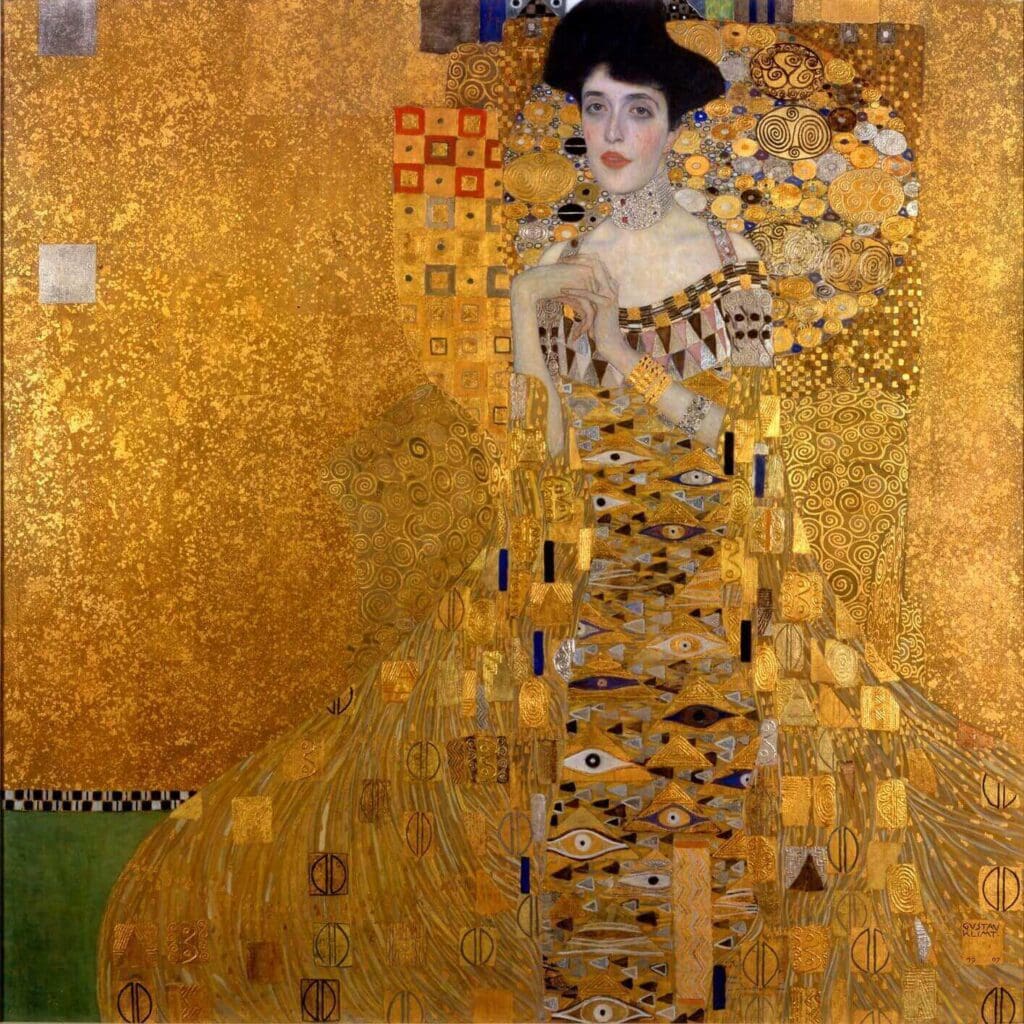
Tracing a brush of oriental influences across Klimt’s works, one can identify how he gracefully incorporates Japanese prints’ stylistic elements. His compositions bear delicate and vibrant patterns laden with metaphoric significance drawn from the natural world, reminiscent of Japanese Ukiyo-e art. This unique synthesis of East and West art forms, buoyed by his mastery, blazes an artistically distinct path.
An integral part of Klimt’s portrayal of the world was his exploration of mortality—the truth of impending decay shadows every essence of exuberant life in his paintings – an unavoidable end.
His later works, notably dominated by bleak elements, are grim reminders of death, with menacing skulls and lifeless bodies directly confronting the observer. His approach to this daunting subject puts him in an exceptional league, revealing an audacity that dares to challenge the conventions of aesthetic beauty.
Klimt’s genius lies in his ability to weave visual narratives infused with profound meanings, imbuing every line, shape, and color with an innate symbolism. These stories unfurl on lush, decorative landscapes that lure the observer into a hypnotic dance of deciphering intentions.
Klimt’s work tantalizes viewers, engaging them in a creative dialogue and inviting them to delve beneath the surface to discover layers of connections, each reflecting Klimt’s personal dialogues and philosophical dissections.
Klimt’s iconic status is due to its stark depiction of the female form in unique ways, exhibiting its emotional complexity and revealing its innate mysteries.
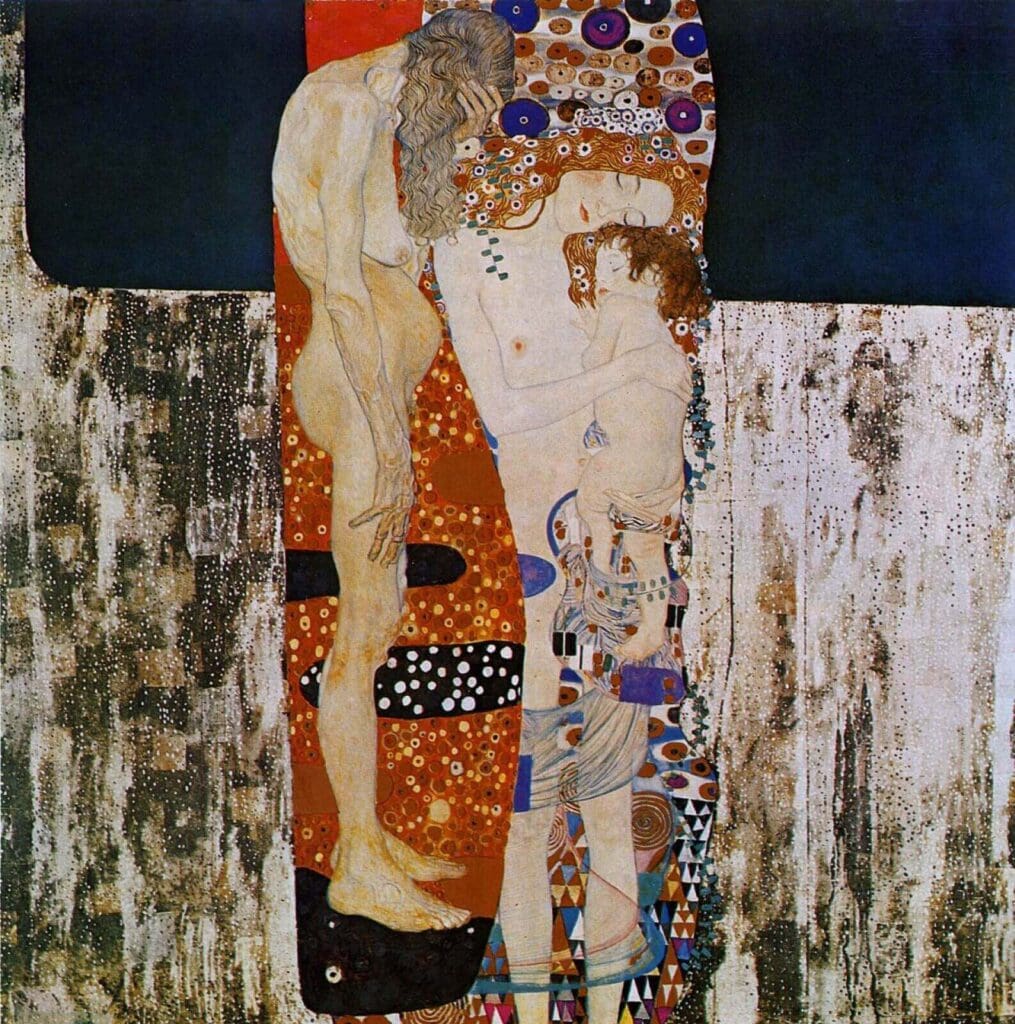
However, his exploration of women extends beyond sensuousness into the portrayal of influential and essential figures in society: mothers. His depiction of maternity in the piece “The Three Ages of Woman” illustrates this perspective, demonstrating the awe-inspiring cycle of life.
Gustav Klimt was a luminary whose influence echoed through the passages of art history. With his distinct style and fearless exploration of universal emotions, he rendered a unique voice.
His legacy, enshrined in a timeless tale told through his mesmerizing compositions, goes beyond purely artistic realms. It reflects the shared humanity that his works illuminate and pays eloquent tribute to his genius, marking him as an irreplaceable figure in the rich tapestry of art history.

Klimt’s Legacy in Modern Art
Gustav Klimt’s profound understanding of universal truths is keenly reflected in his artwork. His ability to mirror the human element and introspection through his impassioned brushstrokes reveals a comprehensive narrative of humanity that transcends cultures and ages.
Dipping his paintbrush into different pools of influence, Klimt introduced oriental facets into his work. The elevation of Japanese woodblock prints during the 19th-century Japonism wave found an artistically fertile ground in Klimt’s canvas. The flat, decorative patterns, asymmetric compositions, and daring mix of vibrantly contrasting colors echo the unique aesthetic convergence of East and West, building bridges in artistry.
Another motif that swirls around Klimt’s paintings is the contemplation of mortality. His renditions articulate the beauty in brief existence and the inevitable passage of time that humanity is bound to. The often melancholy ambiance in pieces like “Death and Life” and “The Three Ages of Woman” wrestles with death and its omnipresence in life, creating a beautiful dichotomy that entranced and challenged viewers.

Symbolism, a trait inherent to Klimt, played an instrumental part in his storytelling. Perceptive eyes will find the deliberate repetition of specific symbolic images across his artworks, such as flowers, spirals, eyes, and more. These visual metaphors provided depth and layers to his art that lend themselves to multiple interpretations, stimulating intellectual analysis and dialogue around his work.
In all their glory and mystique, women were a central theme for Klimt. His famously subversive depictions of femininity broke apart the traditional portrayals of the time, offering a raw, unabashed glance into womanhood and its complexities. His manifold depictions of the female form, including the sensuality of “Danaë” and the tender maternity of “Hope I,” celebrated the power and vivacity of women, forever changing how women were represented in art.

When speaking of Gustav Klimt, one cannot evade the topic of his enduring legacy. His ingenuity traveled far beyond his time, casting a lengthy shadow on modern art. Klimt’s influence resonates with Egon Schiele, his mentee and devotee, contemporaries, and future generations. His novel blending of decorative and fine arts, his transgressive exploration of erotic subjects, and his oeuvre’s ethereal beauty have all forged his immeasurable contribution to the canon of art history.
Undeniably, Gustav Klimt was more than just a painter; he was a visionary and an emblem of innovative creativity. He courageously navigated the unchartered territories of his inner world and external influences, taking bold leaps that landed him on groundbreaking artistic terrain. Klimt’s diverse oeuvre speaks volumes of his spirit of transcendence and ceaseless exploration, which lives on and continues to inspire artists and art lovers alike.
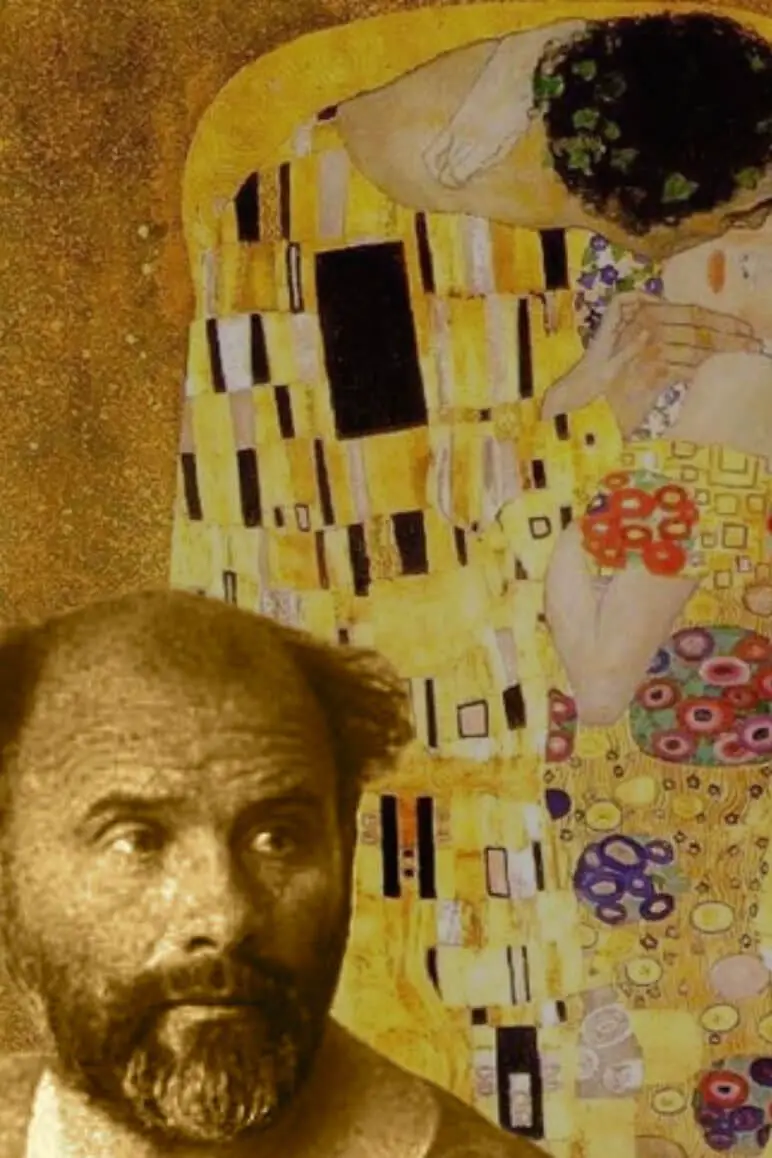
Through turbulent times and stagnant societal norms, Gustav Klimt’s art danced in the face of adversity, weaving a story that remains etched in the annals of history. His famed strokes on canvases continue reverberating in the art world as modern artists draw inspiration from his innovative style, making his influence palpable even in the 21st century.
From his symbolic depictions in ‘The Kiss’ to the exploration of feminine sensuality in ‘Portrait of Adele Bloch-Bauer I,’ Klimt’s iconic works are celebrated for their timeless allure and thought-provoking themes. His contribution to the Vienna Secession marked a pivotal moment in art history, forging him as a beacon of inspiration in creativity.
As such, Gustav Klimt’s legacy, cloaked in gold and brimming with profound symbolism, continues to sing an enduring melody of revolution and reinvention in the ever-evolving world of art.
Anita Louise Art is dedicated to art education, great artists, and inspiring others to find and create their art. We love art that uplifts and inspires. #ArtToMakeYouSmile! #ArtToMakeYouHappy!
If you want to see any of my art, you can find out more by clicking here. If you are interested in what inspires me and my paintings, you can discover more by clicking here.
We have a free newsletter and would love you to be part of our community; you can subscribe to the newsletter by clicking here. If you have any questions, I would be happy to talk to you. You can reach me, Anita, by clicking here.
Subscribe to our Anita Louise Art YouTube Channel, filled with great videos and information by clicking here.
Join us for our podcast “5 Minutes With Art.” Spend just 5 minutes a week with us to discover and learn about great art and artists. You can find out more about our podcast by clicking here.
Related Questions
Unlocking The Secrets Of Gustav Klimt’s Iconic Kiss
The Kiss is one of Gustav Klimt’s most celebrated artworks; it was painted from 1907 to 1908. The painting is filled with intricate details and gold leaf. The Kiss by Gustav Klimt depicts a couple locked in a passionate embrace, with the man kissing the woman on her cheek. The painting shows Gustav Klimt’s unique artistic style.
By clicking here, you can learn more by reading Unlocking The Secrets Of Gustav Klimt’s Iconic Kiss.
Gustav Klimt’s Paintings: An Intimate Glimpse Into His Genius
Gustav Klimt is widely regarded as one of the most influential artists of the 20th century. His innovative and daring approach to art and unique style and vision have made him an icon in modern art. Klimt’s paintings are celebrated for their sensuality, symbolism, and intricate details, which have captivated audiences for over a century.
By clicking here, you can learn more by reading Gustav Klimt’s Paintings: An Intimate Glimpse Into His Genius.
The Timeless Legacy Of Gustav Klimt’s Paintings
Gustav Klimt was a groundbreaking Austrian artist whose work continues to captivate audiences worldwide. His bold and innovative approach to art and his use of symbolism and sensuality have made him one of the most iconic artists of the modern era. Klimt’s legacy has profoundly influenced the art world and continues to inspire artists today.
By clicking here, you can learn more by reading The Timeless Legacy Of Gustav Klimt’s Paintings.

